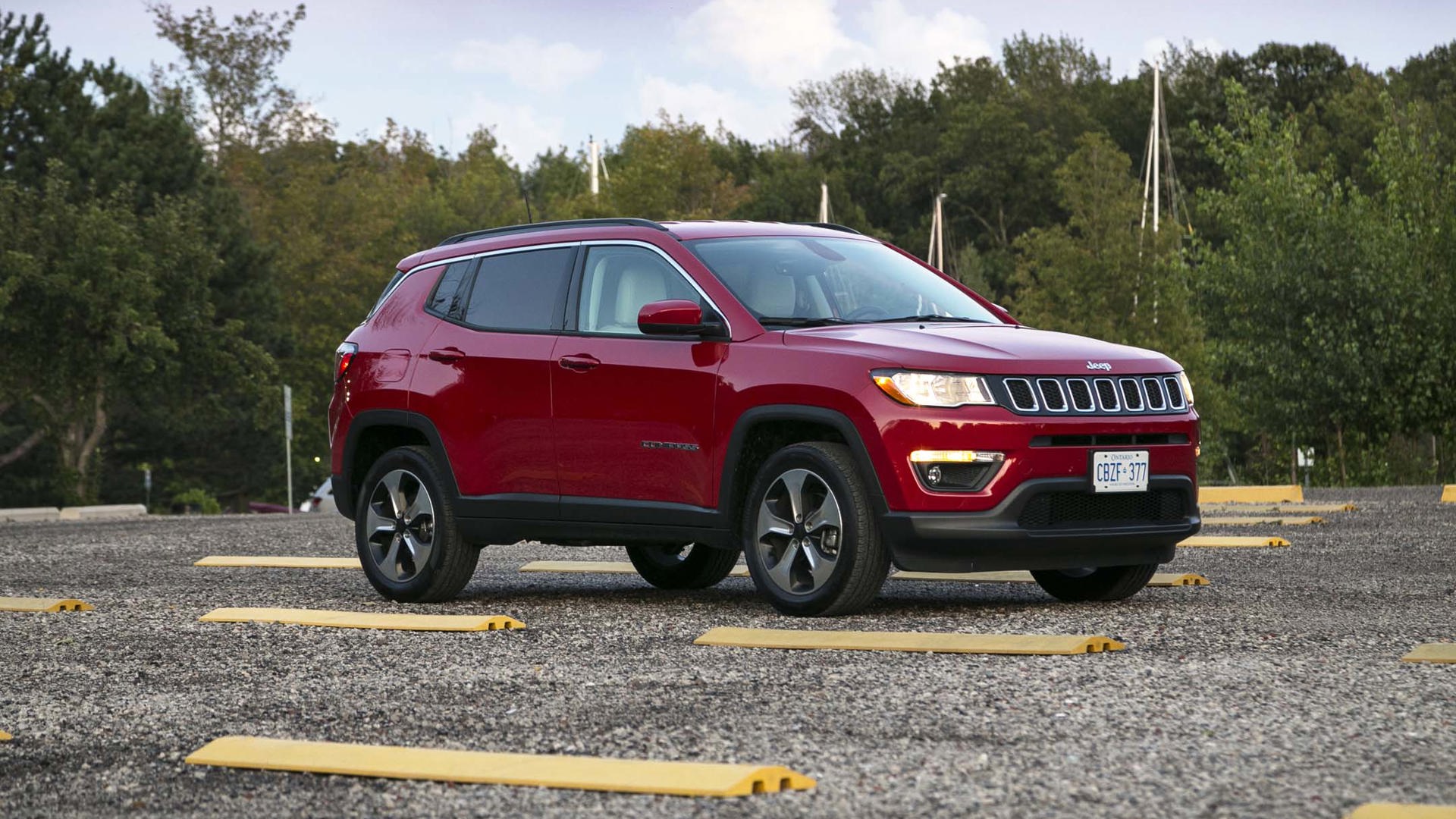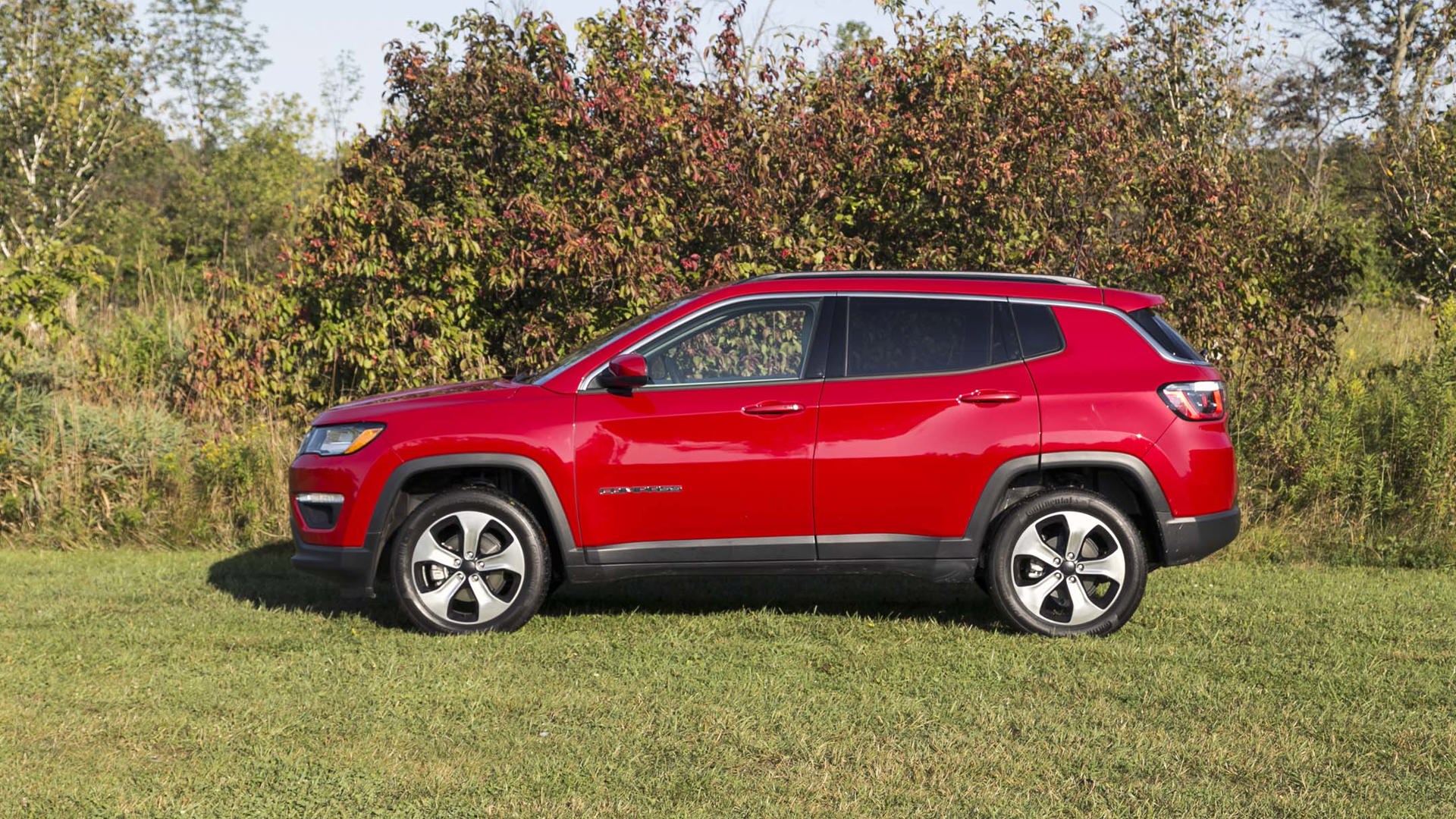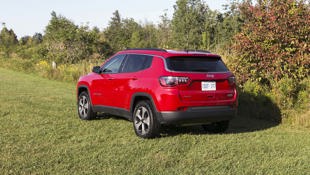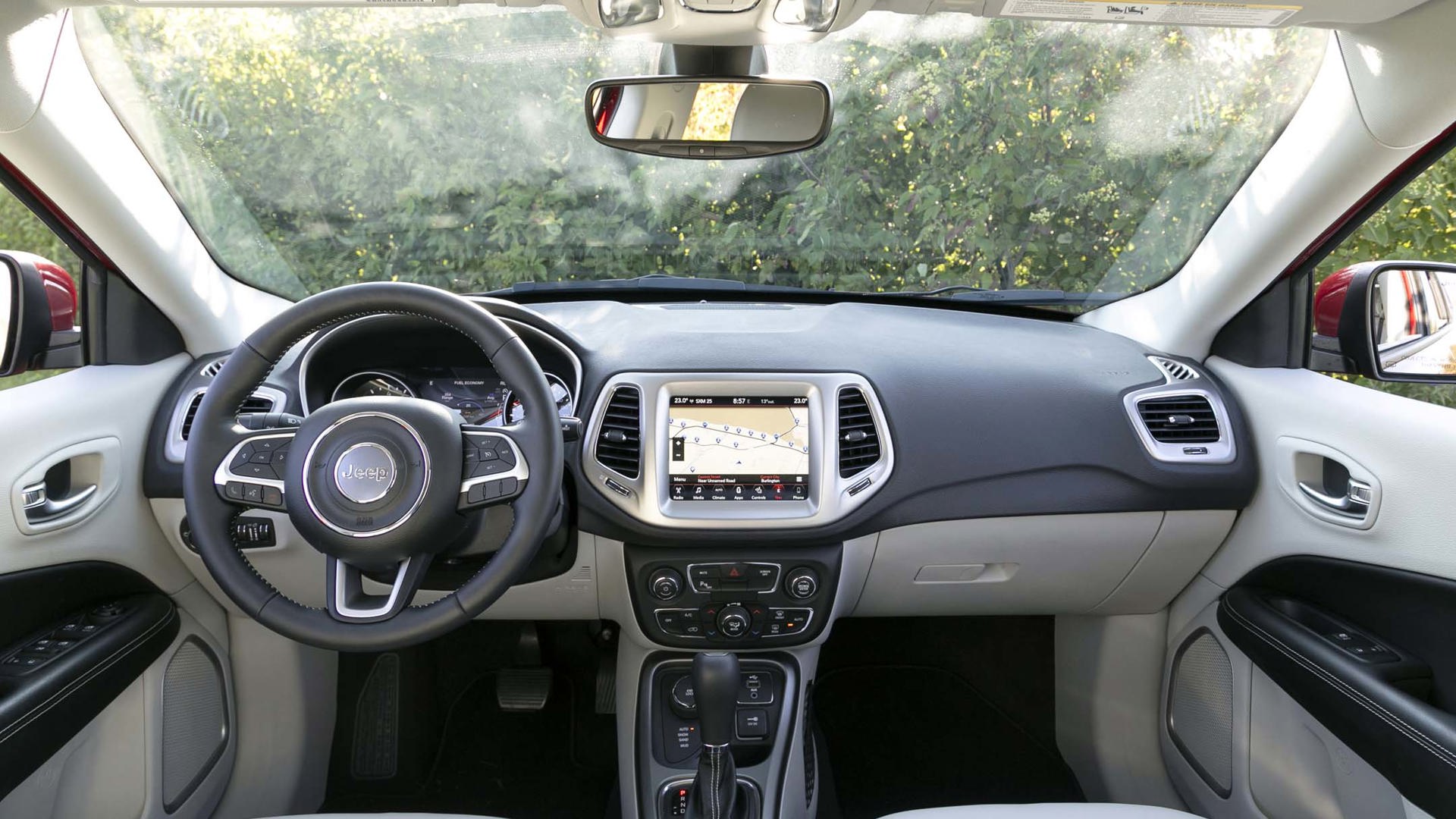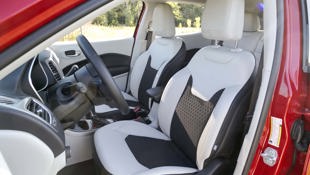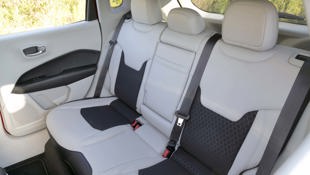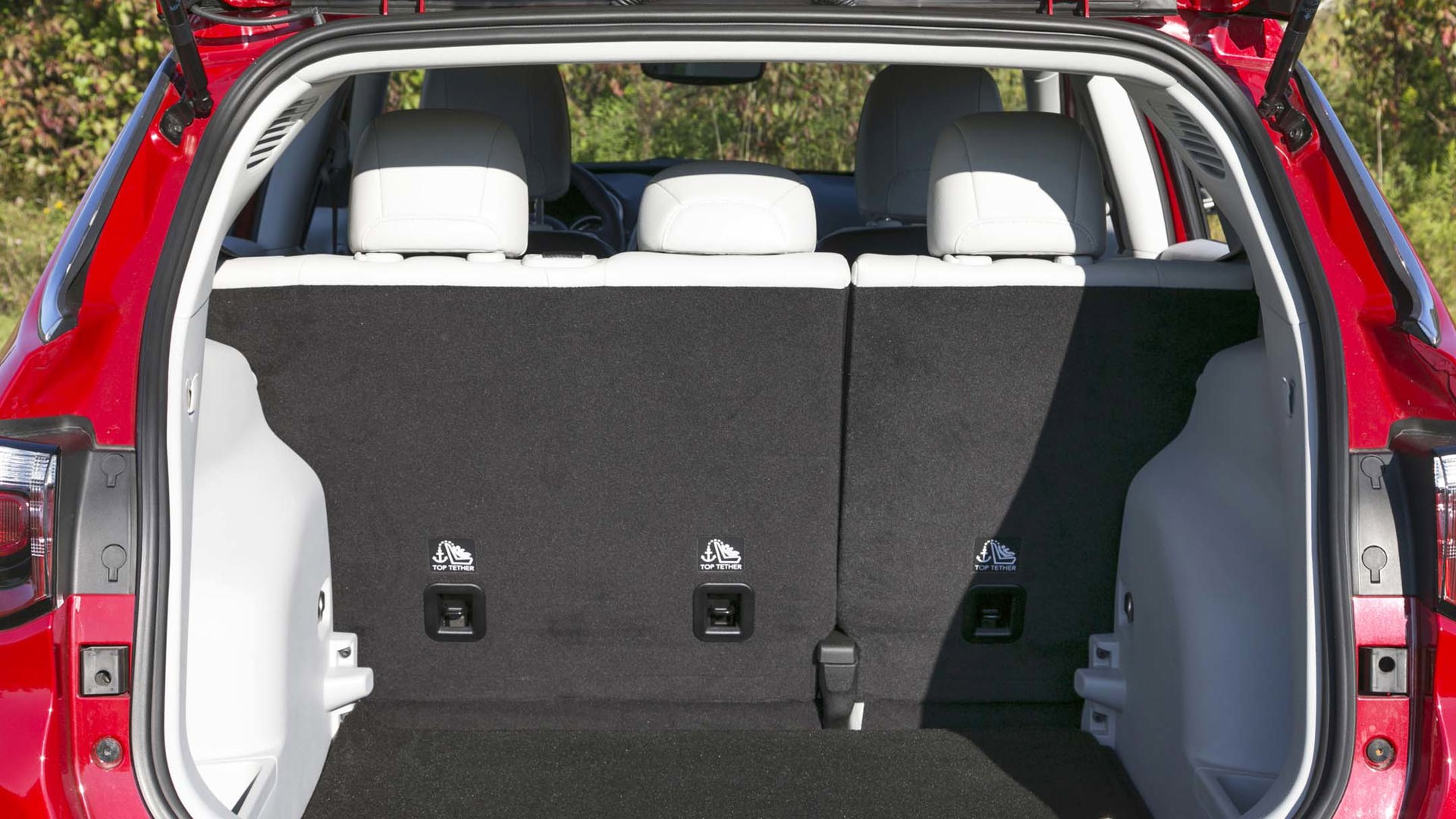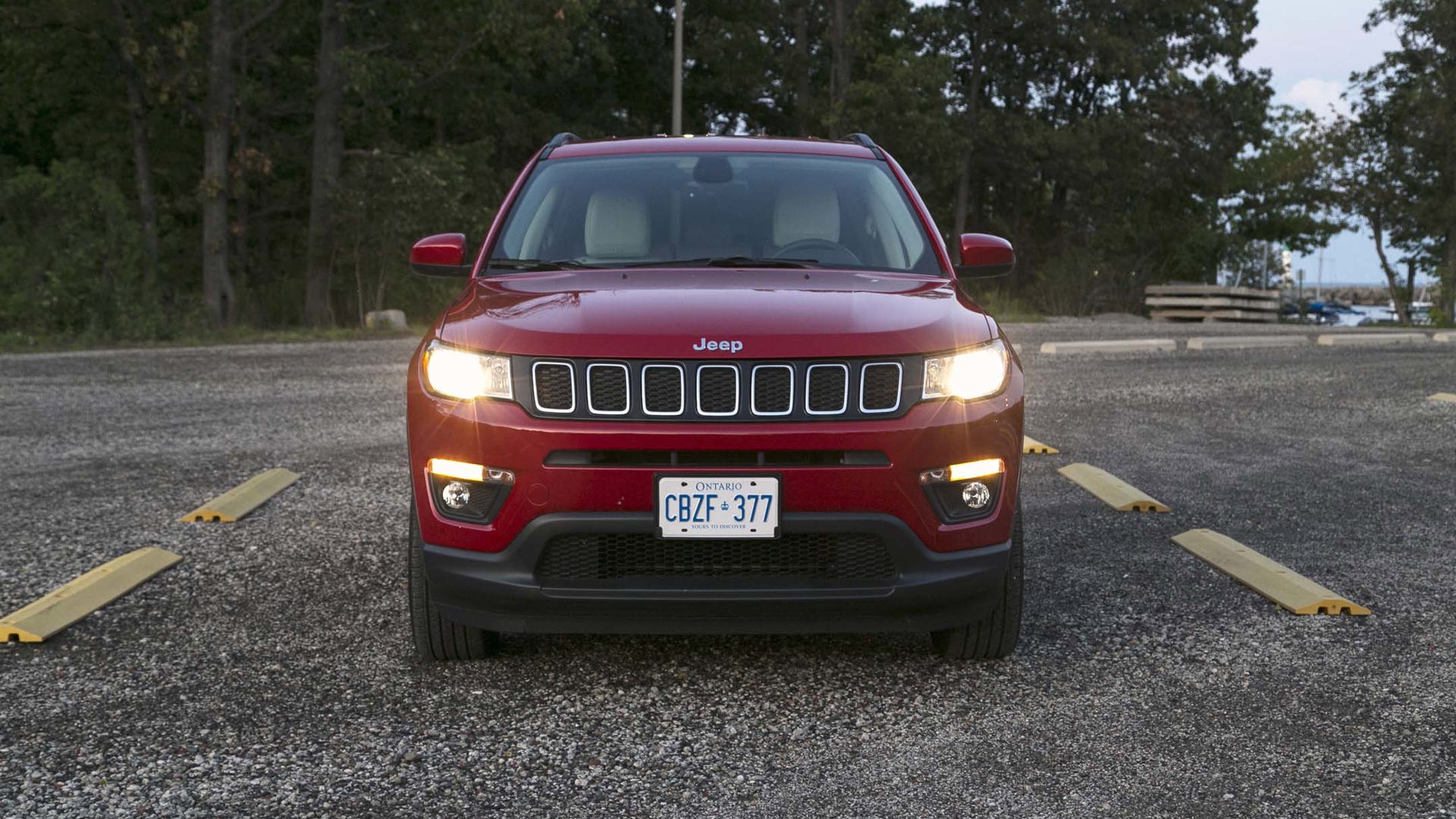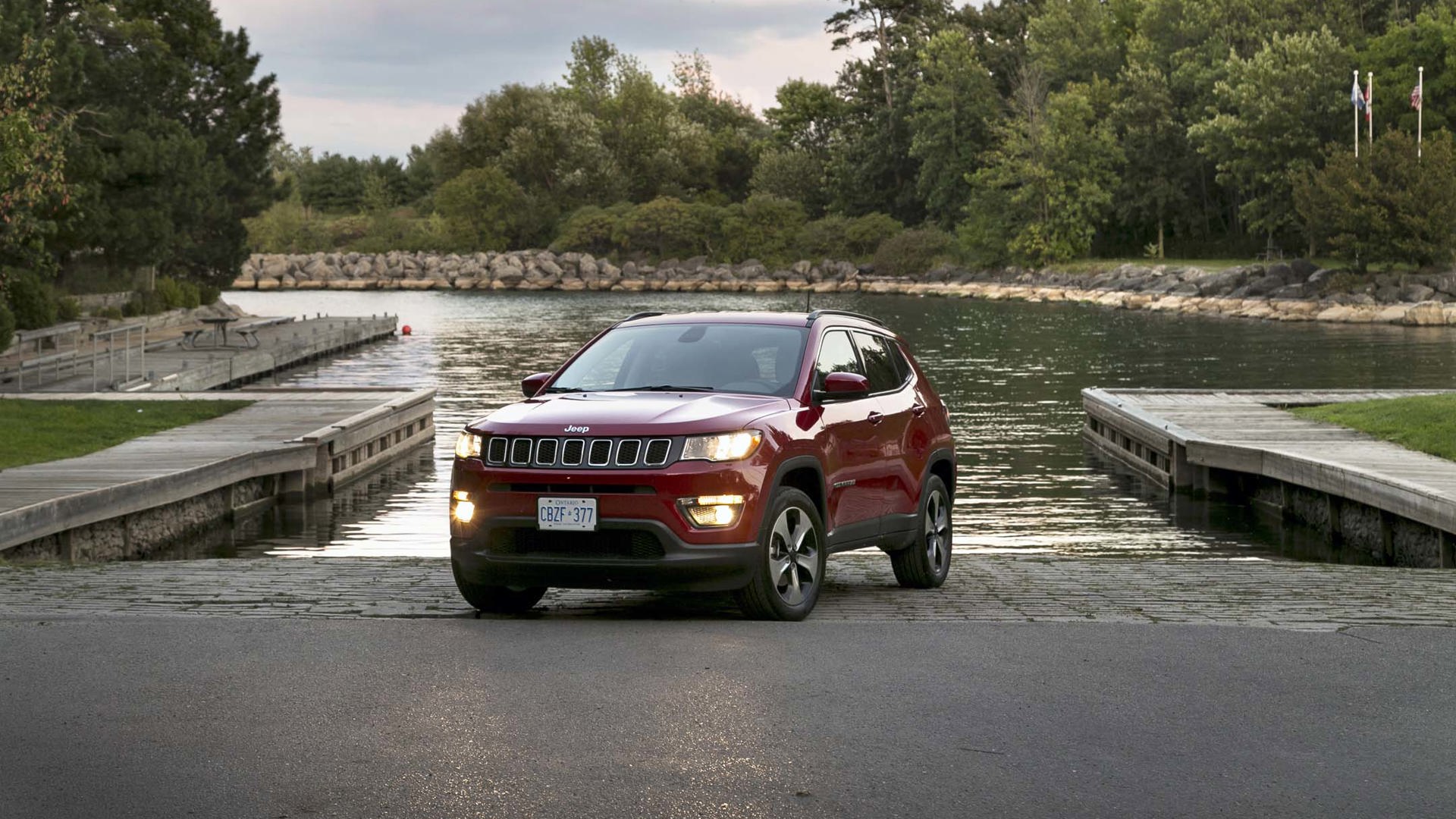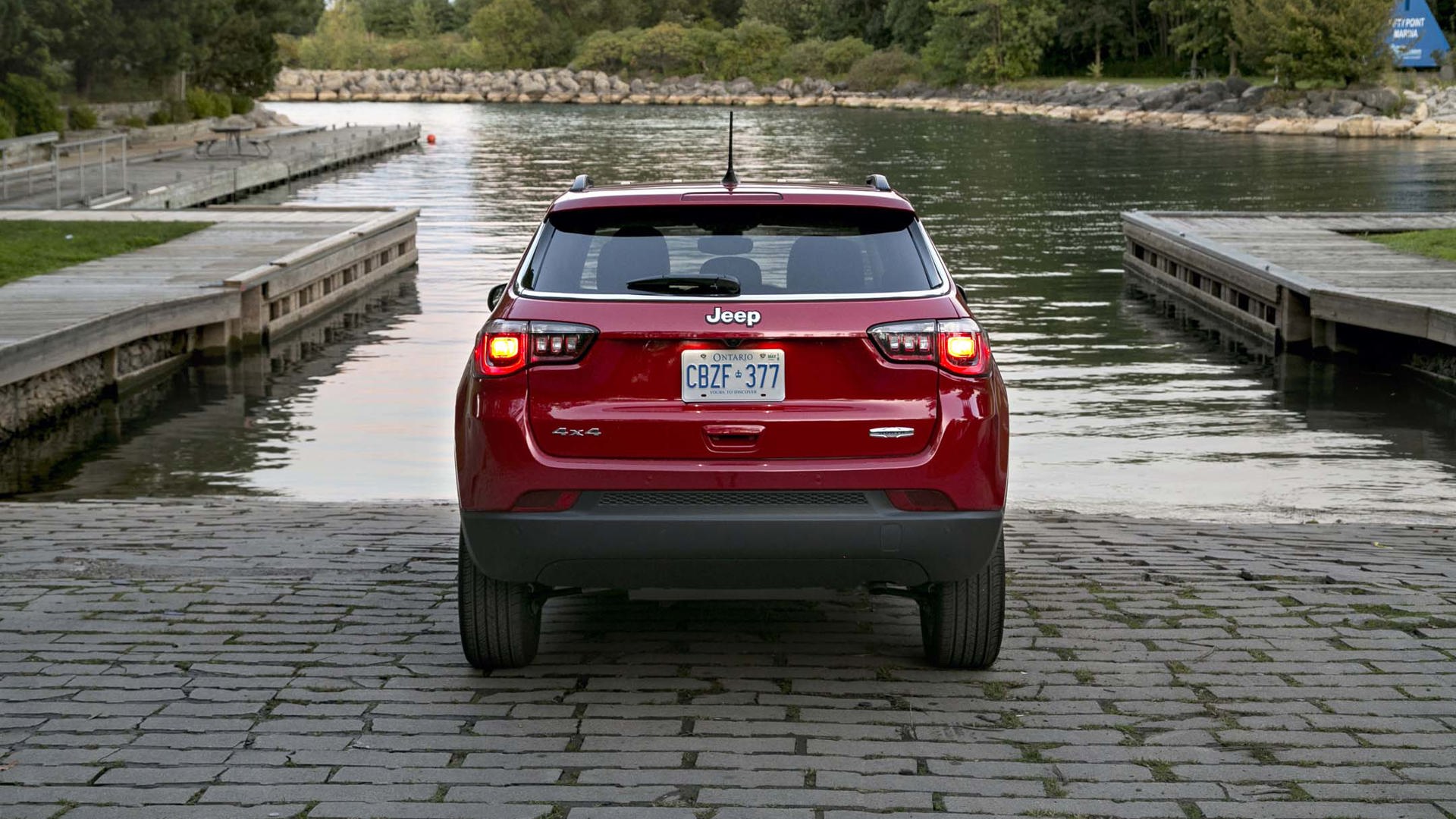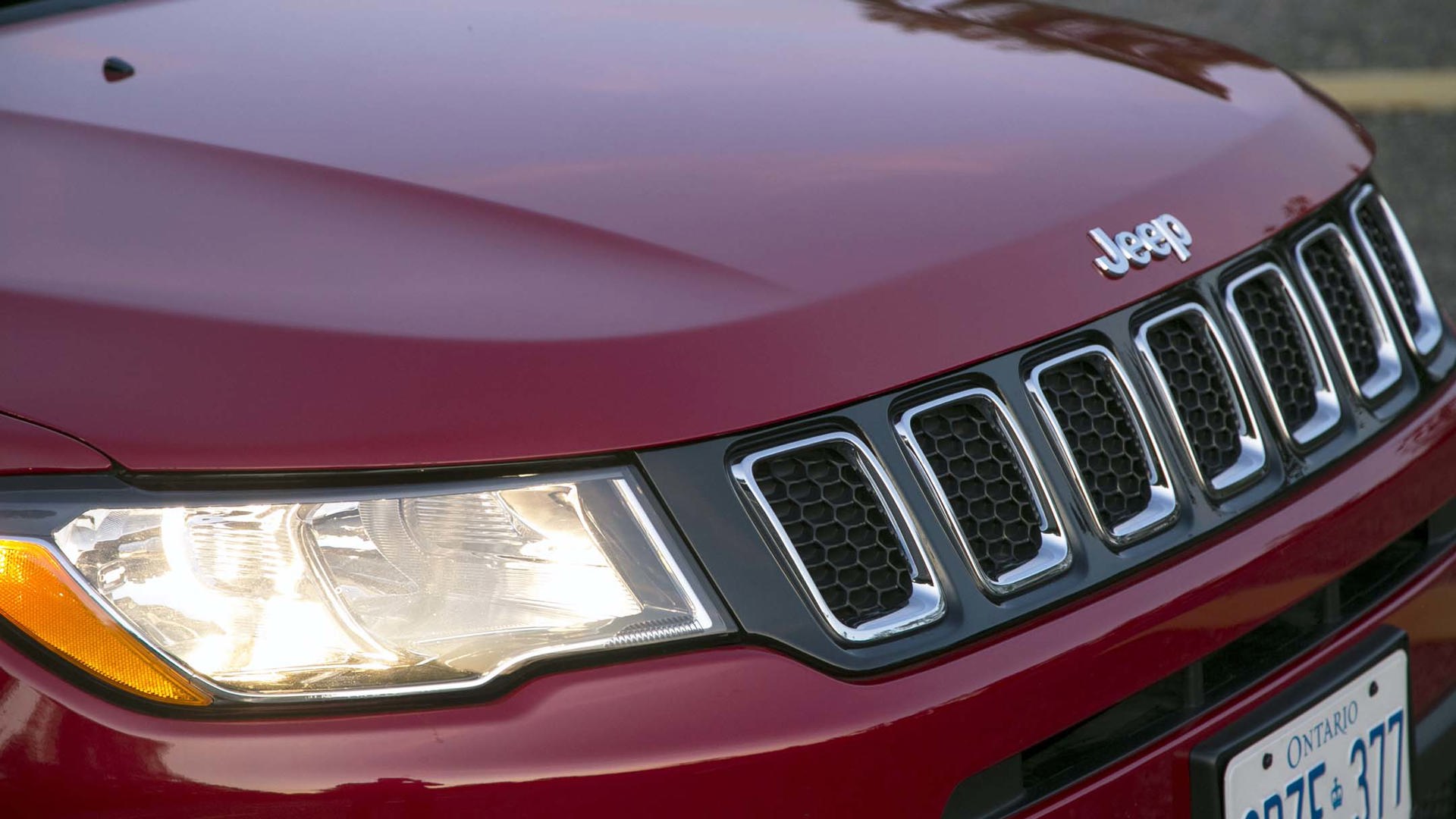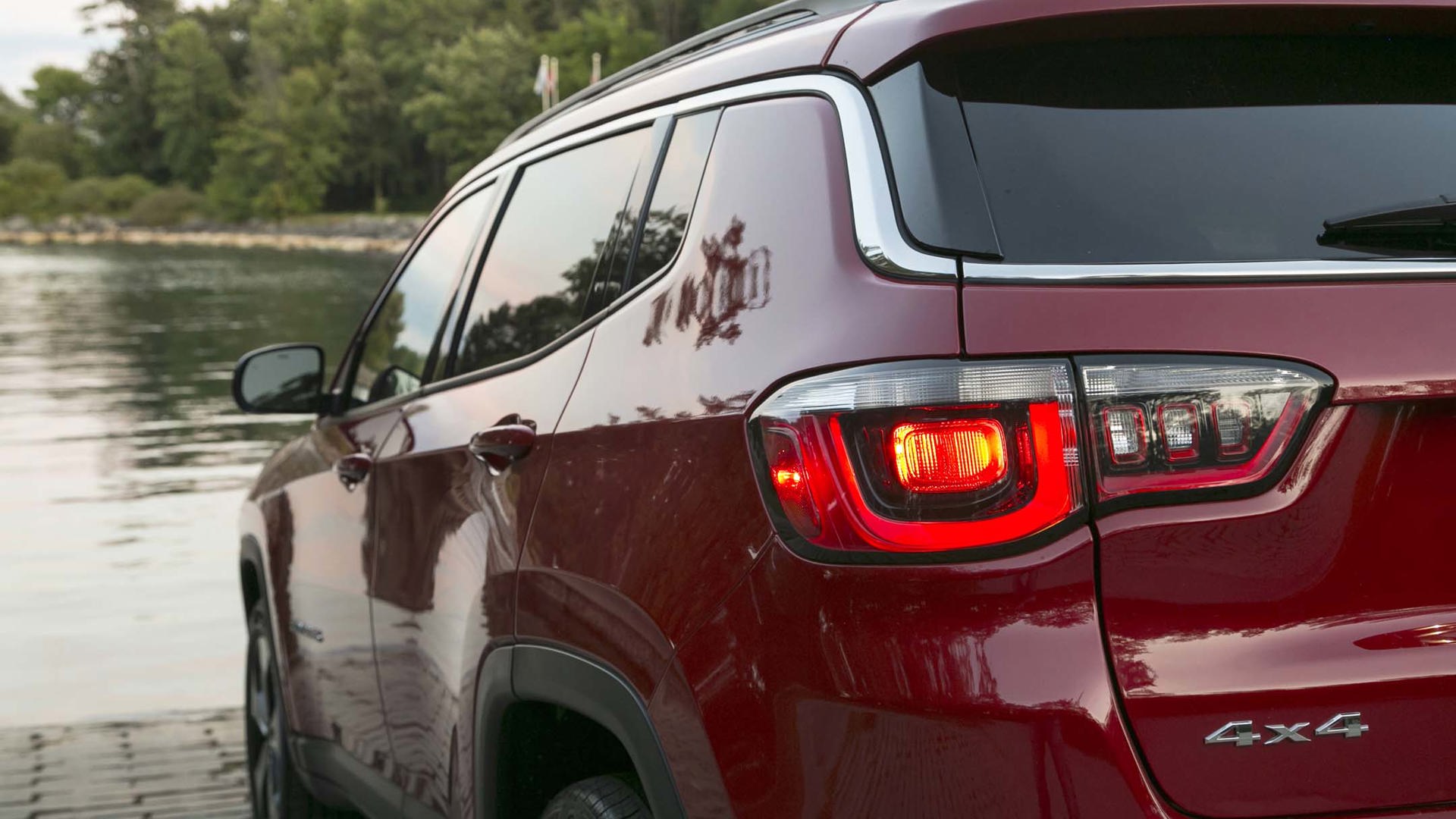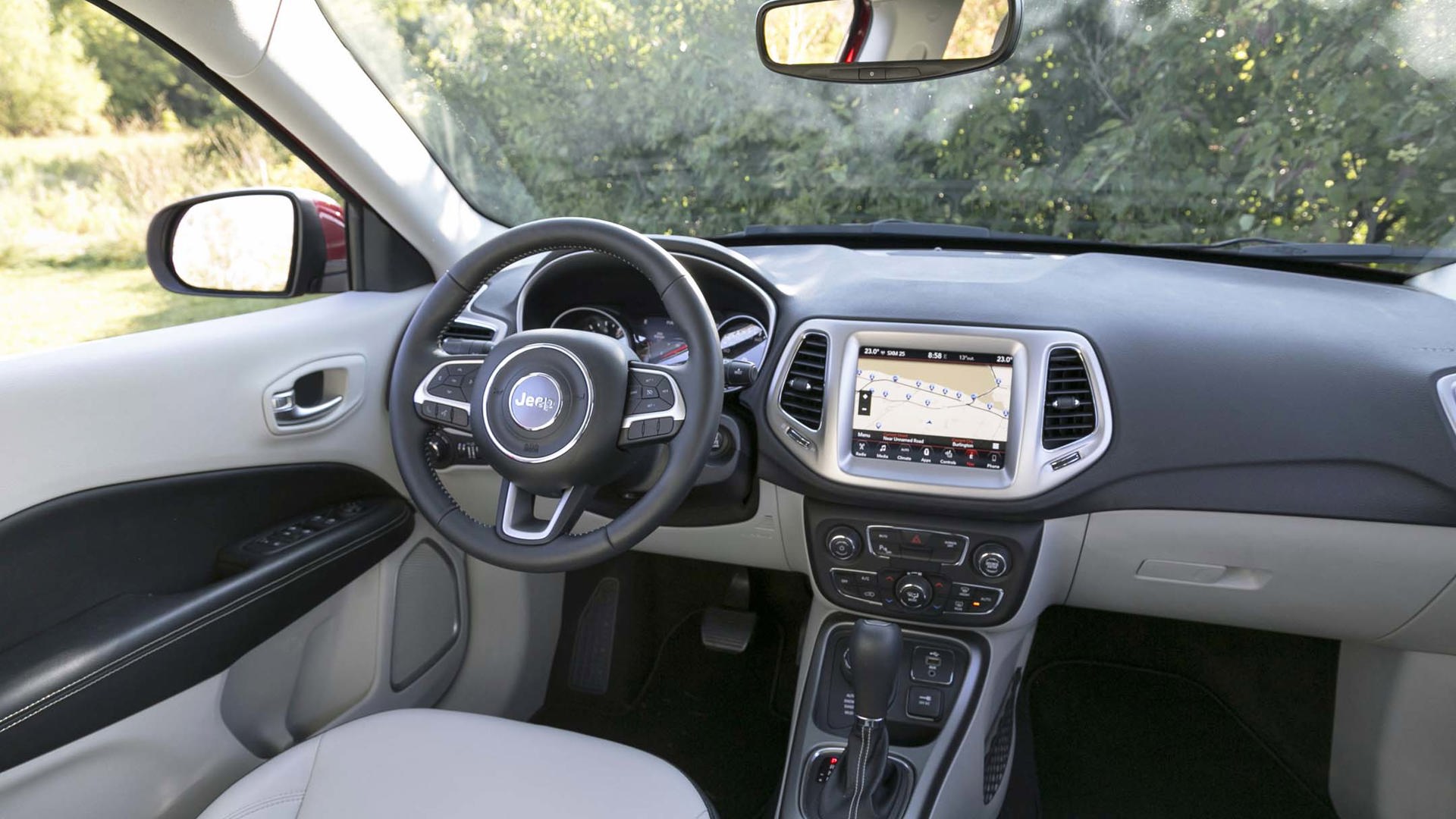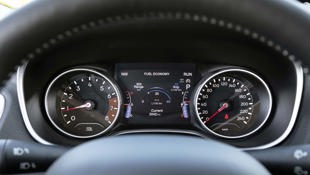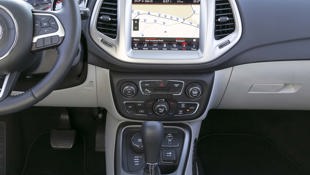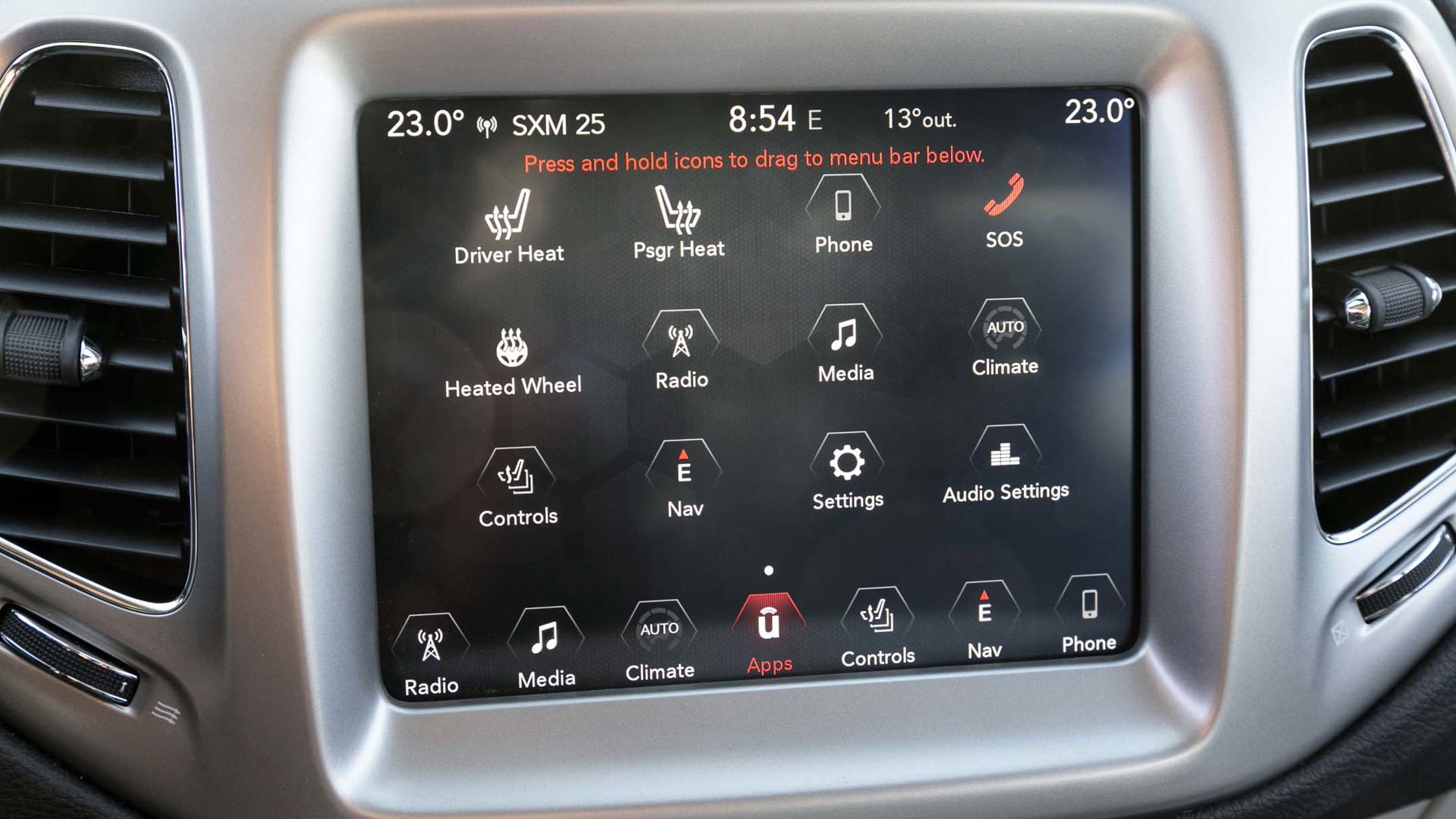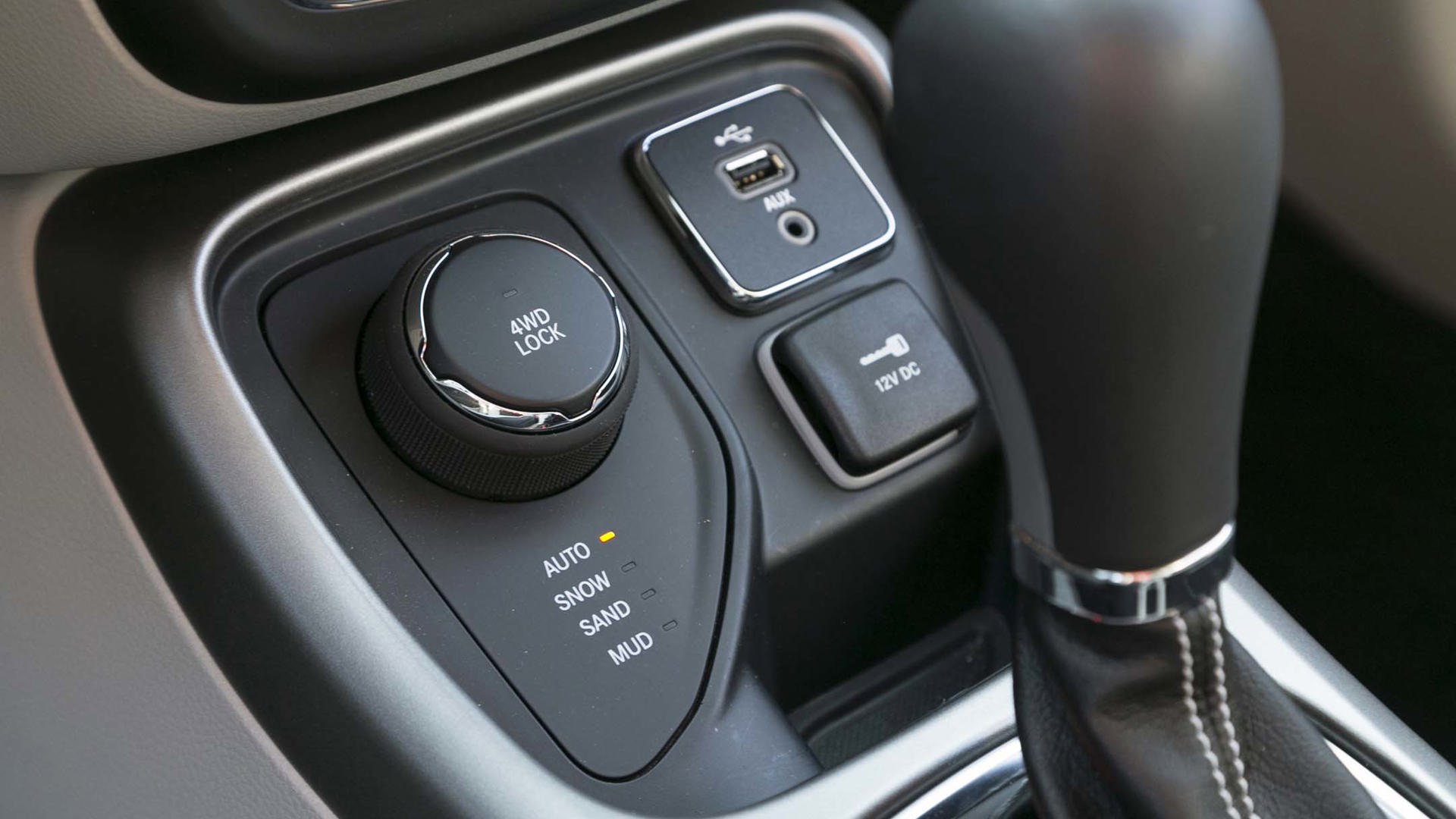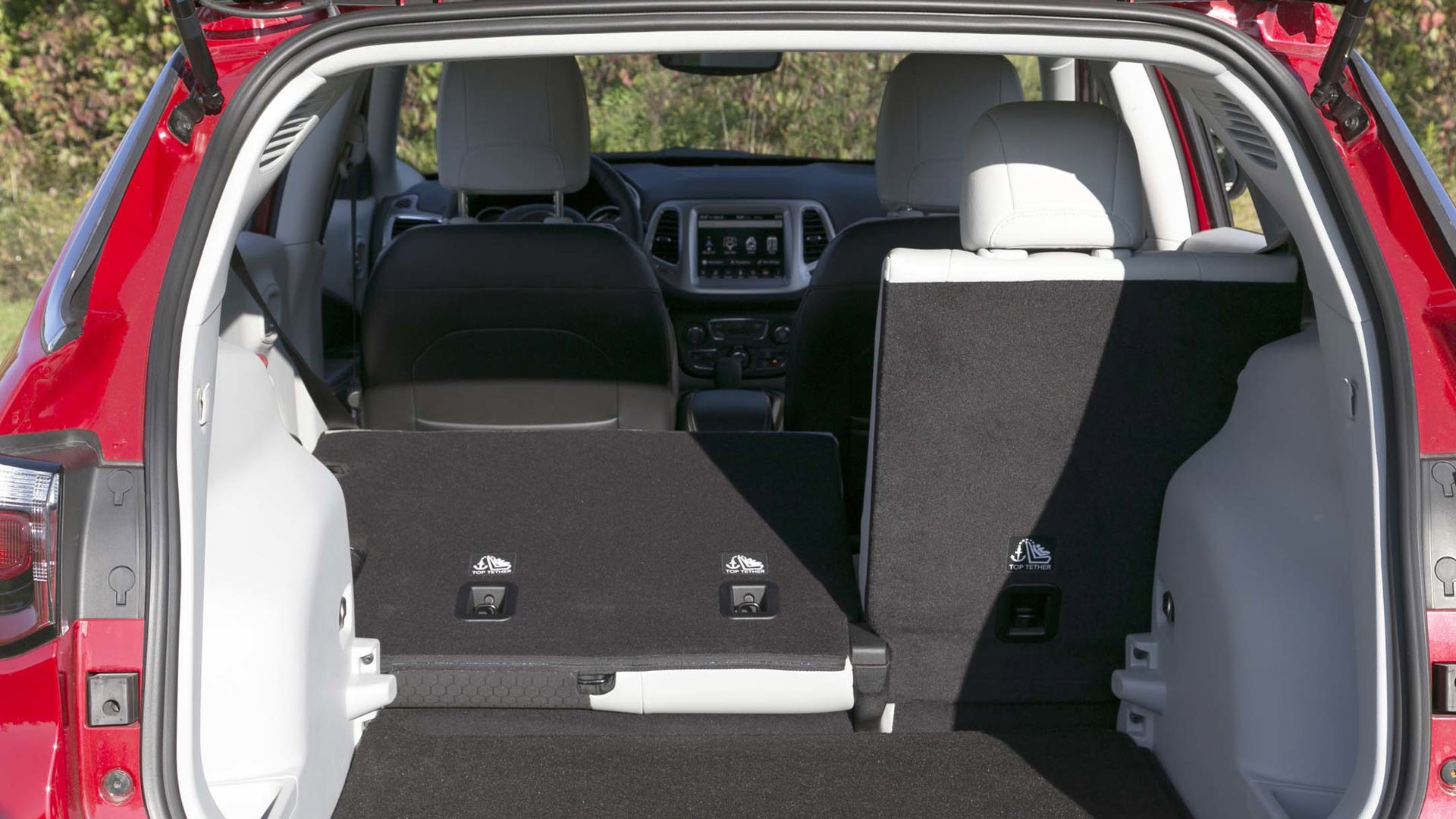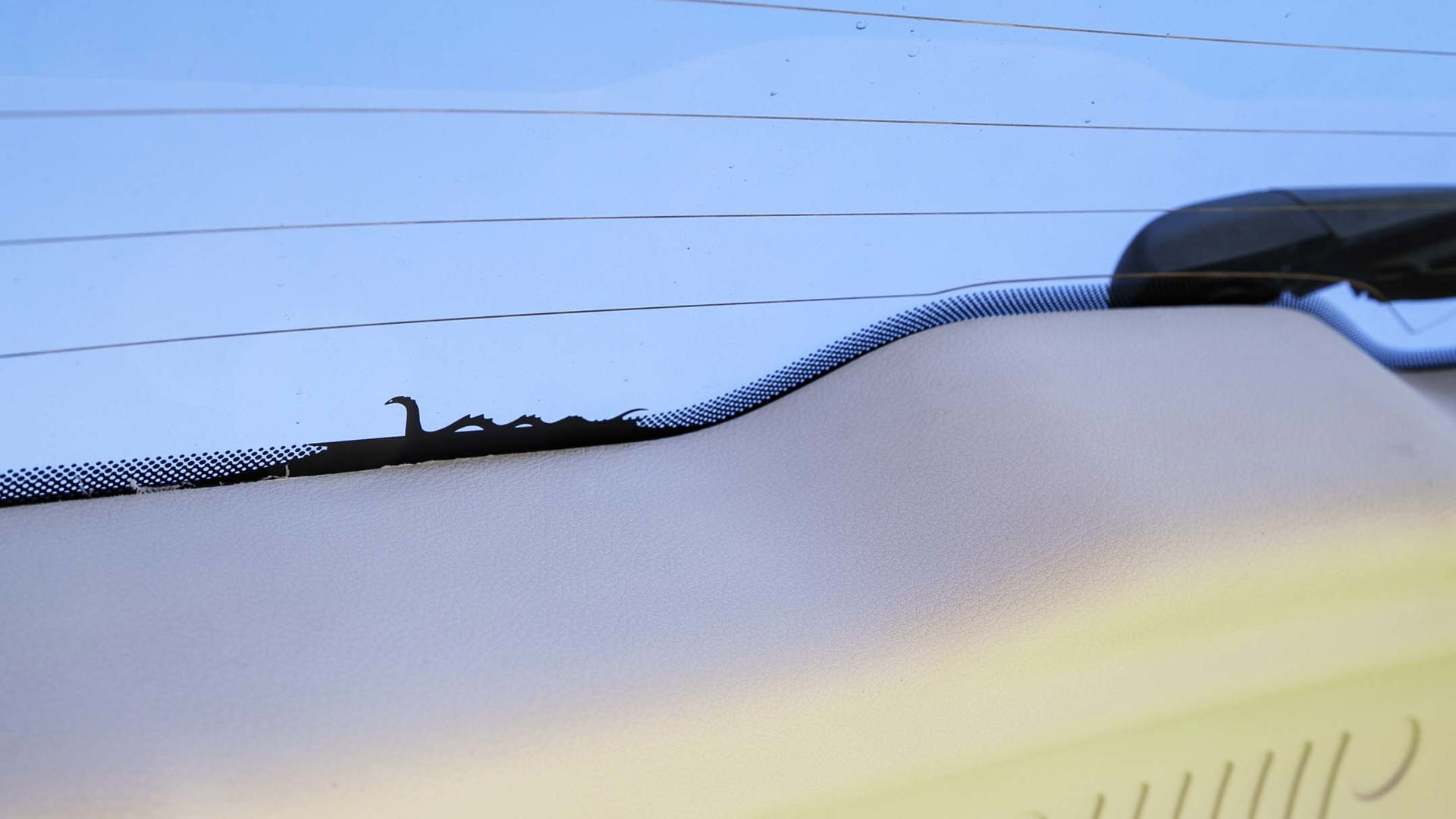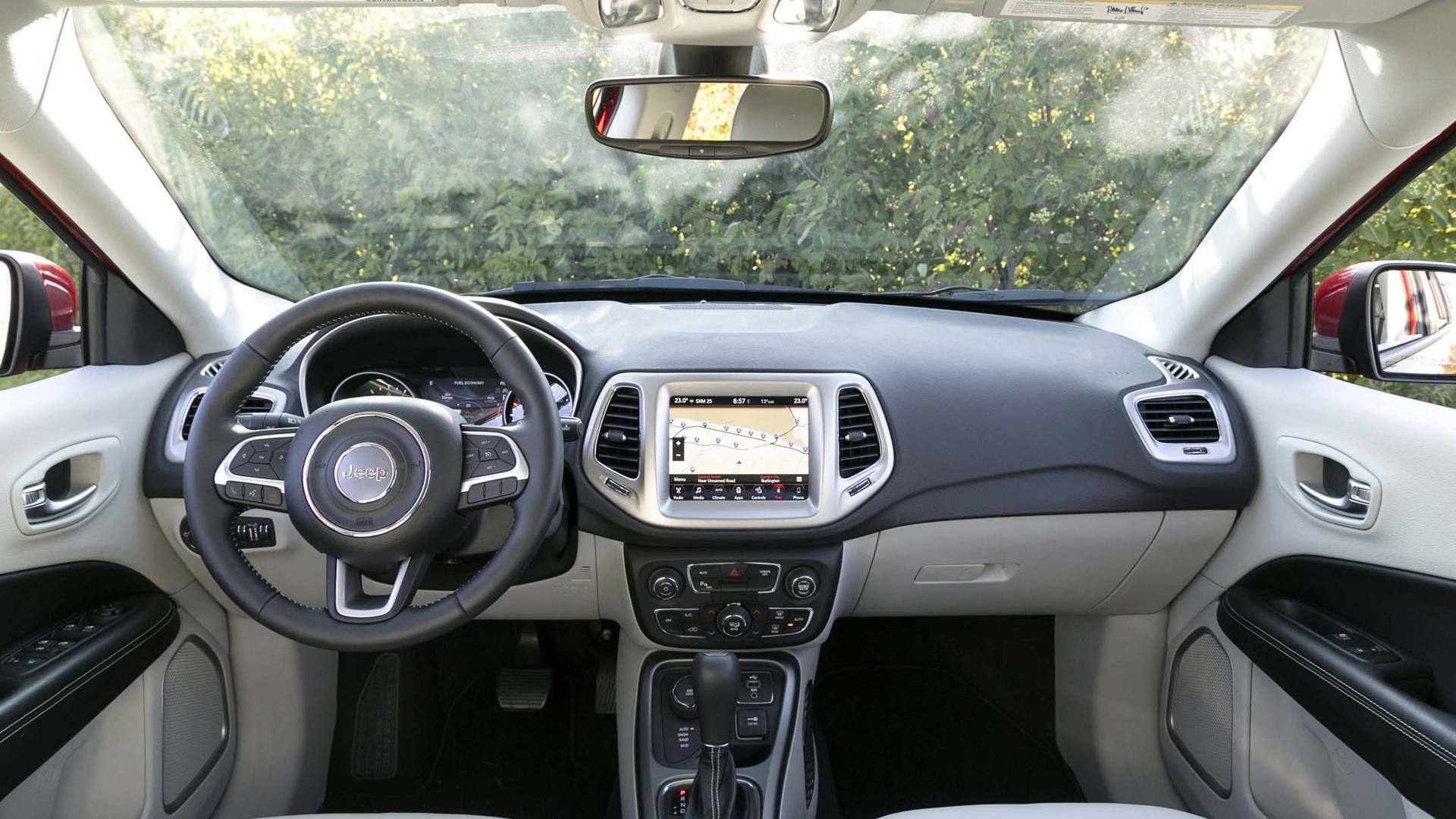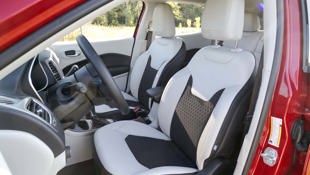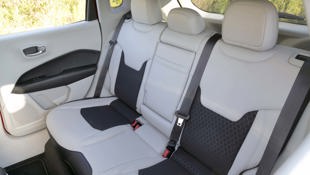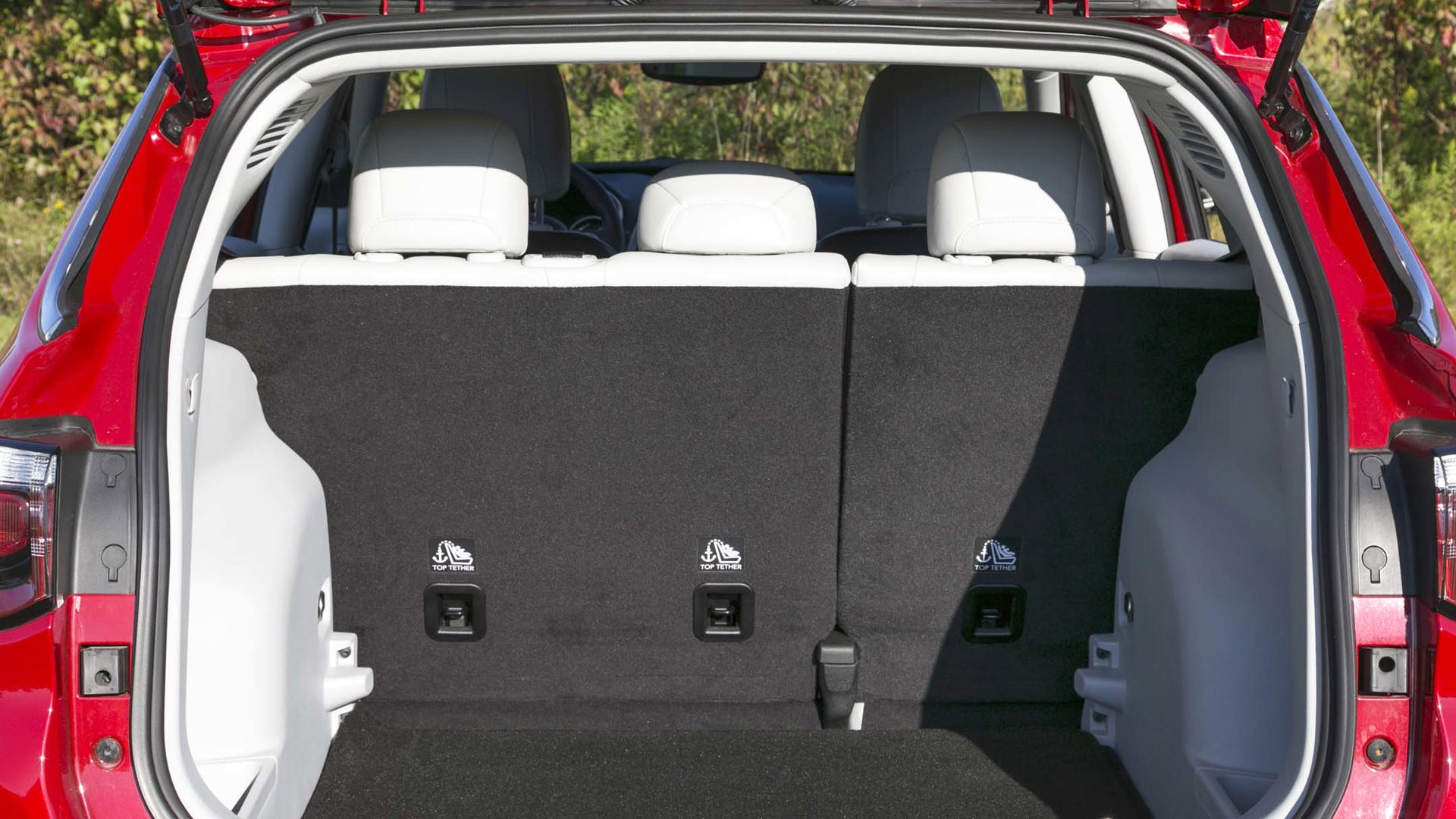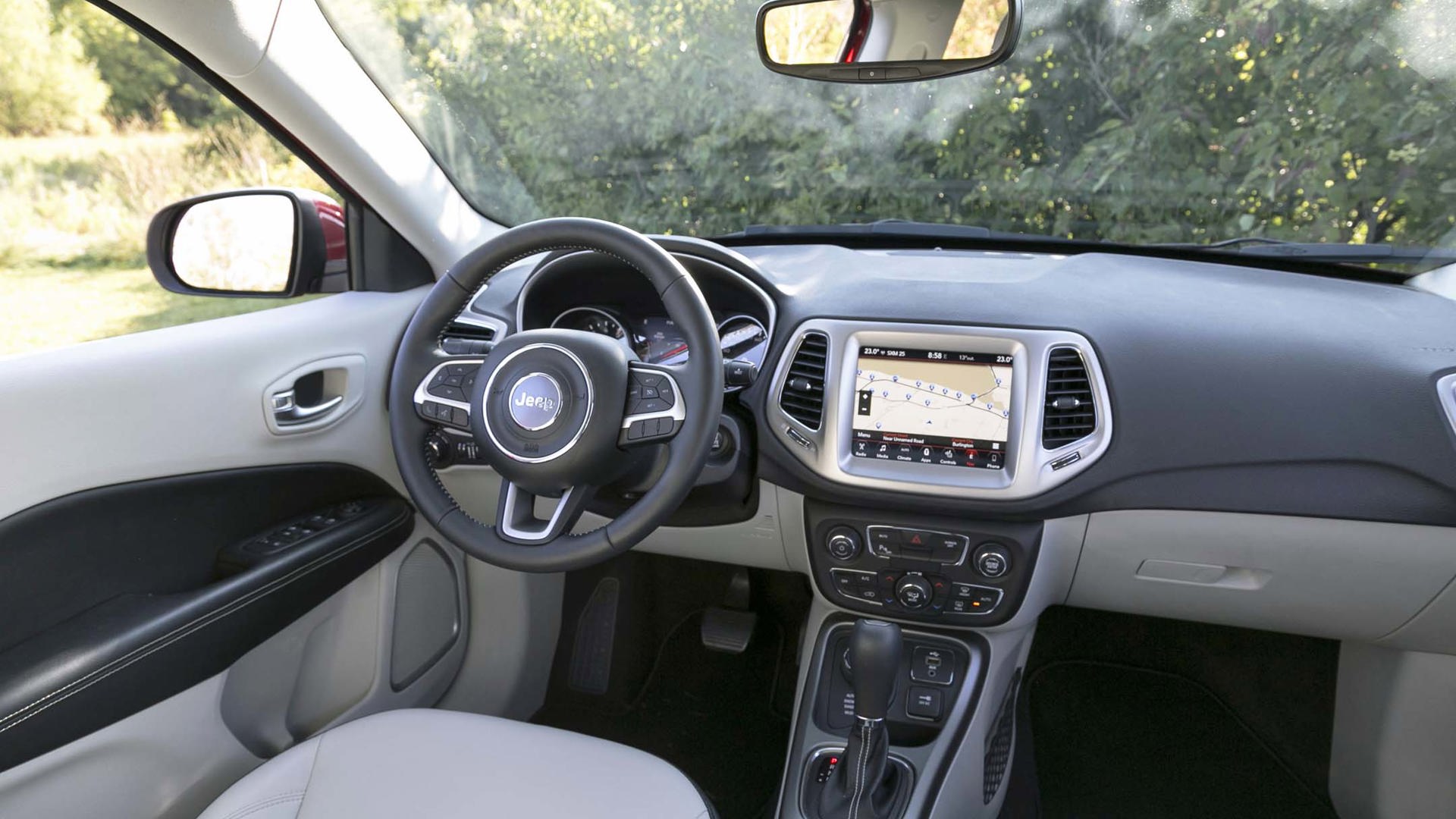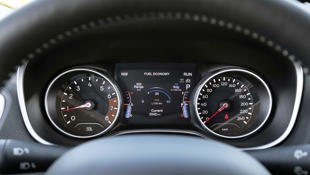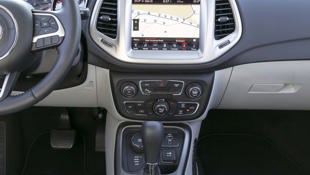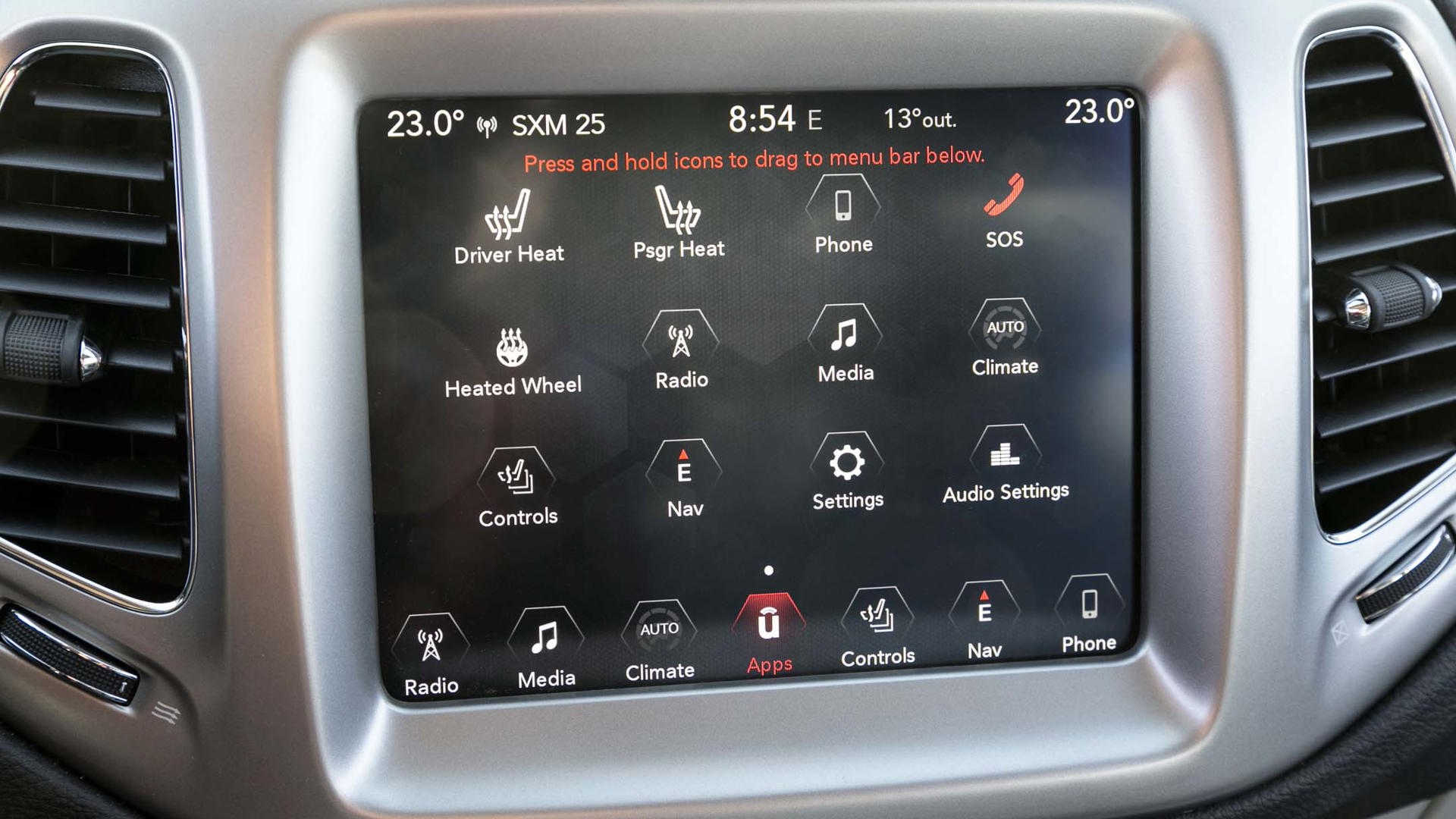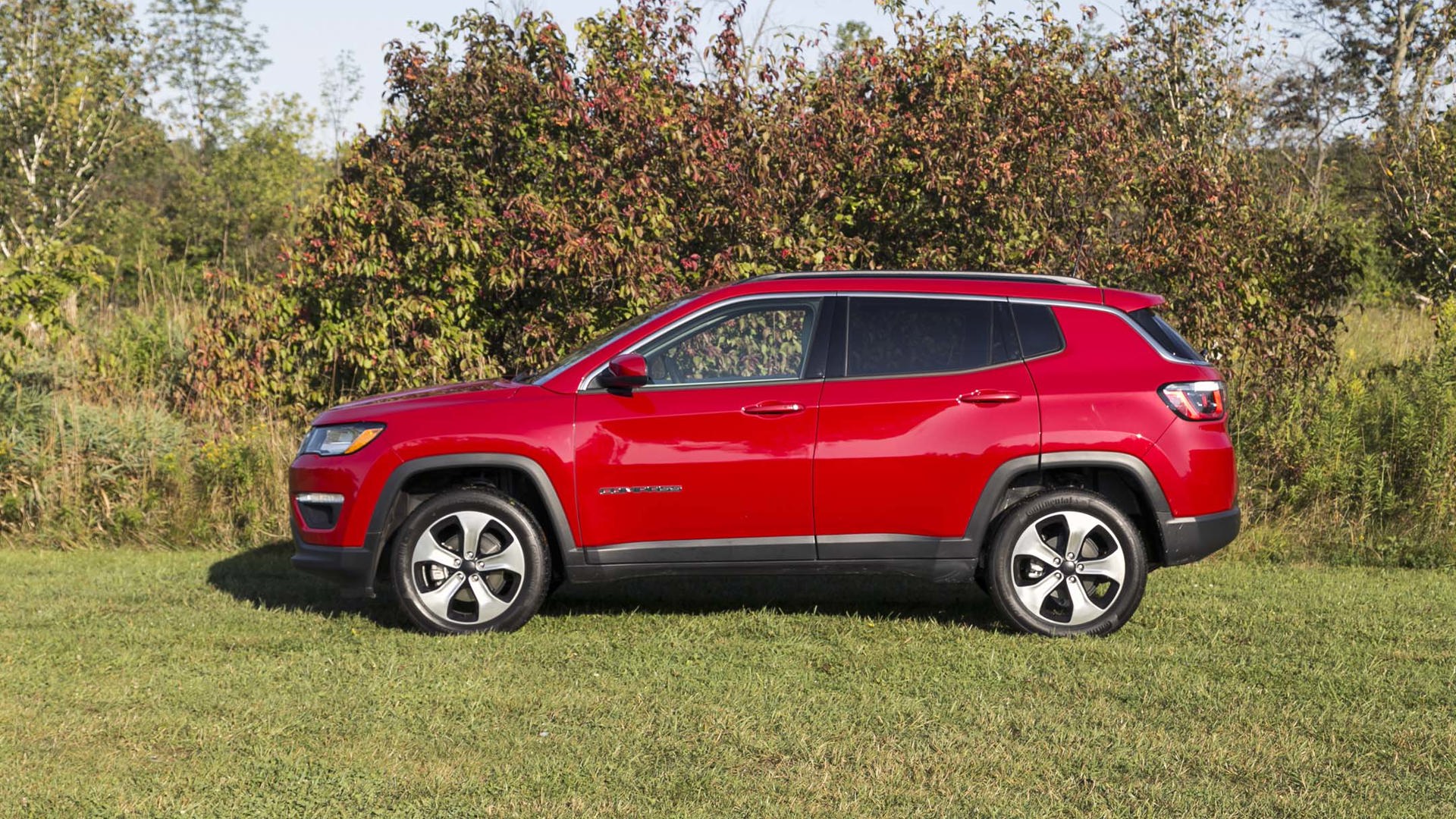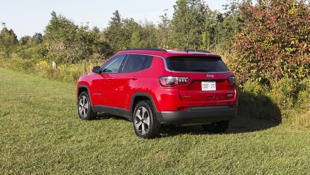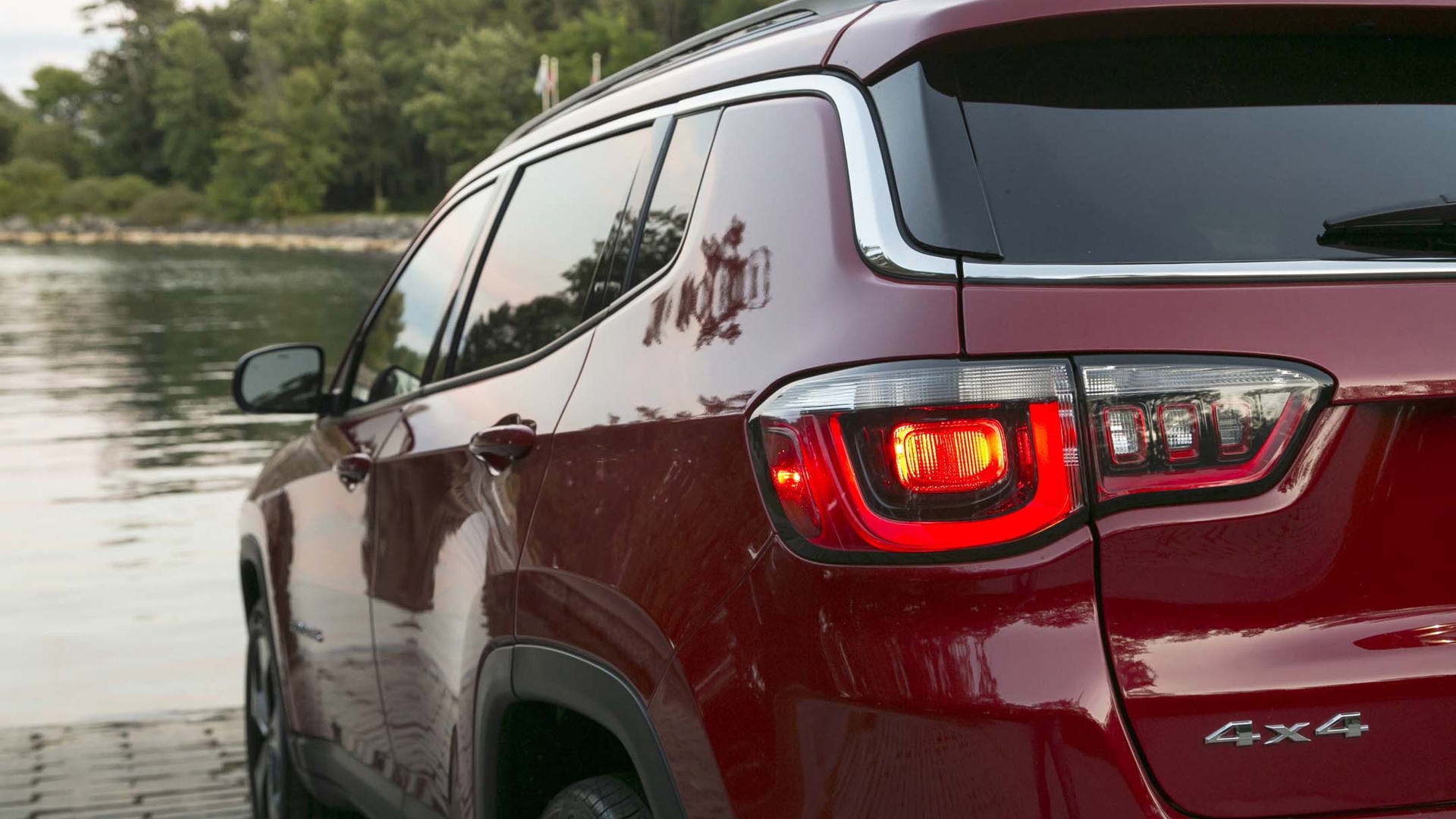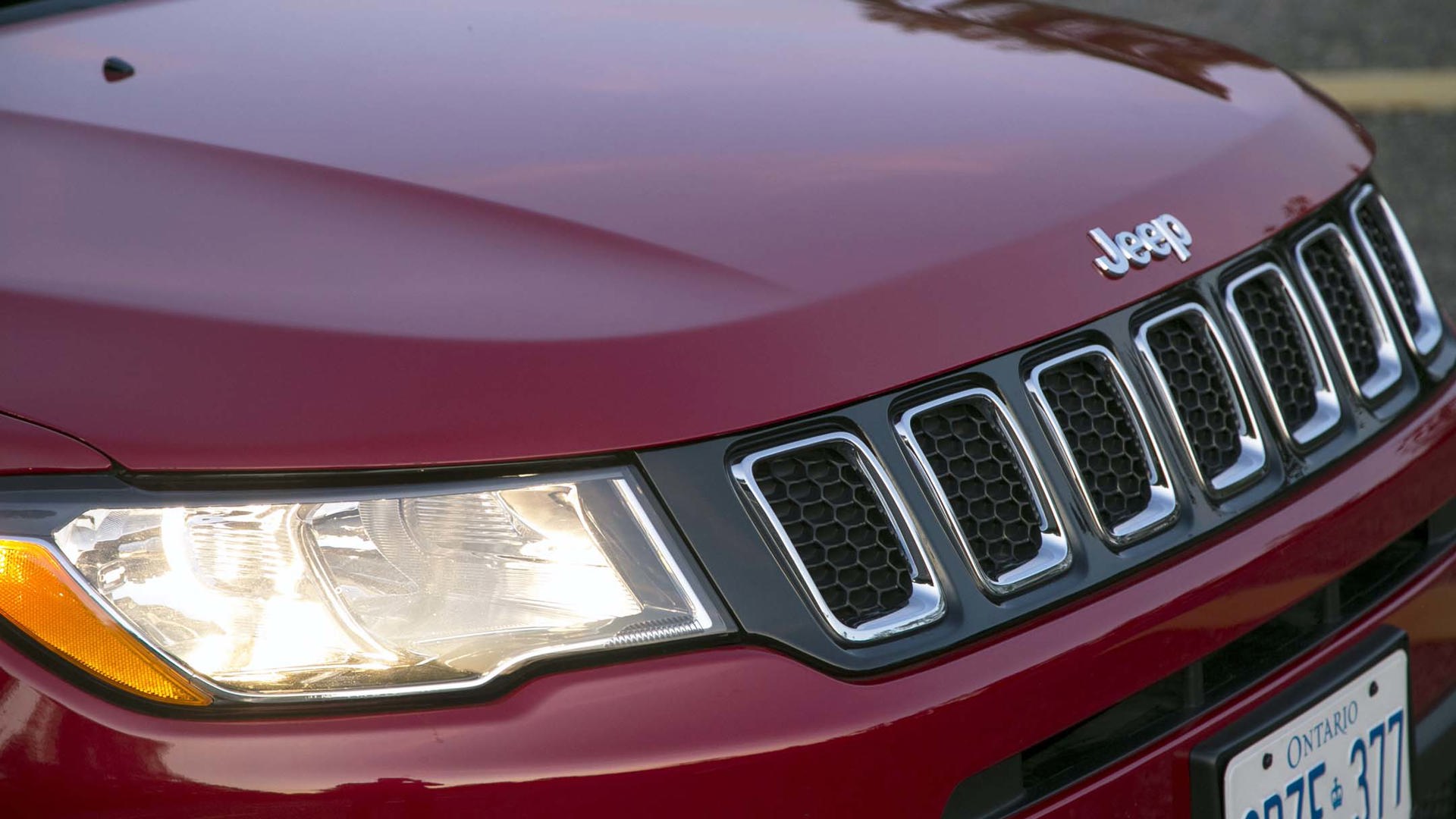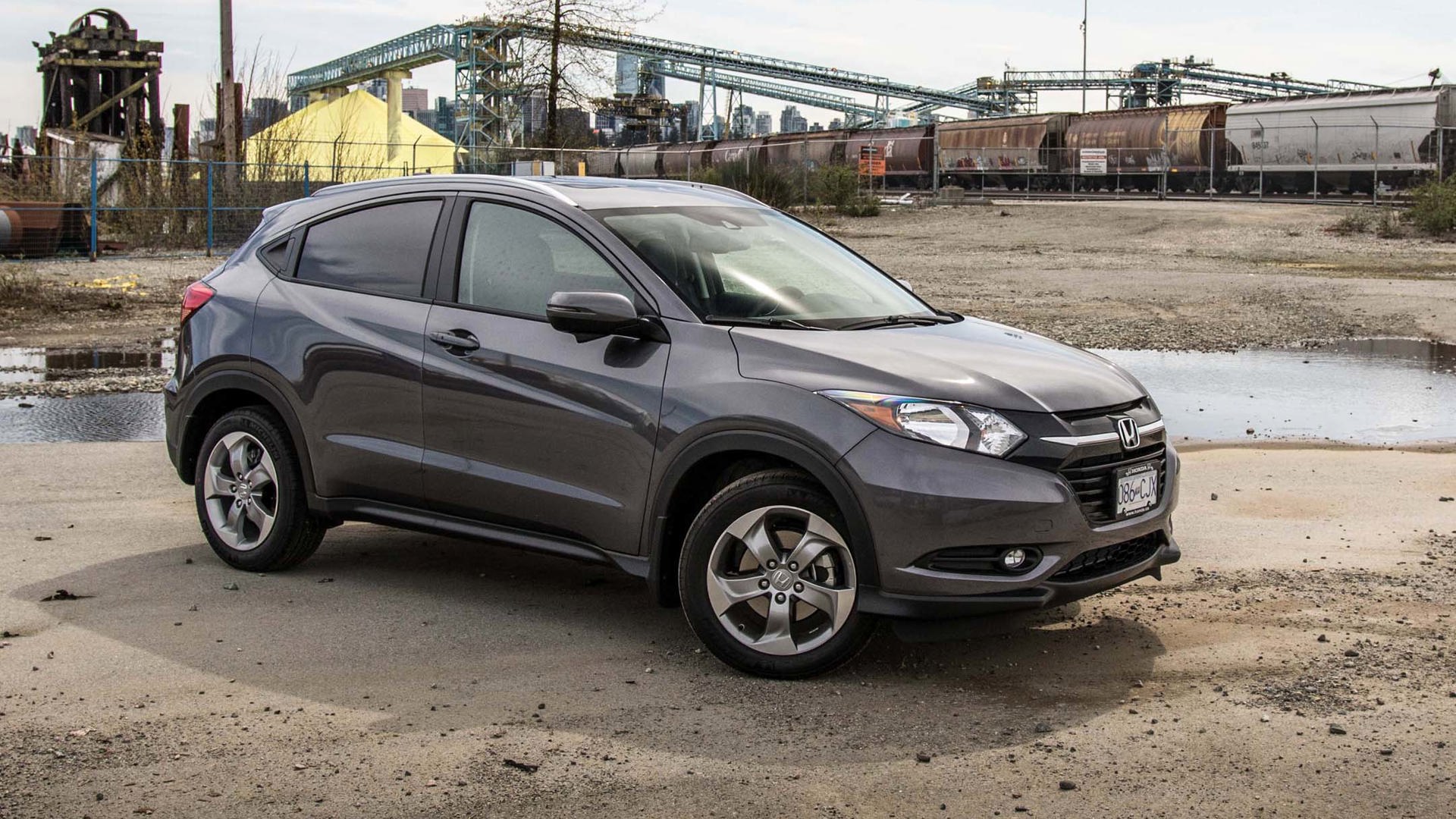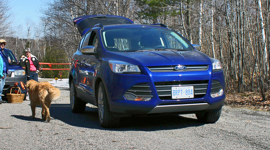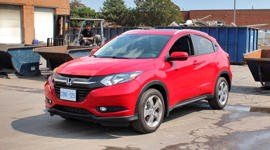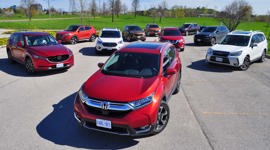 AutoTrader SCORE
AutoTrader SCORE
-
STYLING7/10
-
Safety7/10
-
PRACTICALITY7/10
-
USER-FRIENDLINESS7/10
-
FEATURES6/10
-
POWER6/10
-
COMFORT6/10
-
DRIVING FEEL7/10
-
FUEL ECONOMY6/10
-
VALUE7/10
People love Jeeps. All sorts of people have been snatching up all sorts of Jeeps over recent years. Through ups and downs across the various brands in FCA’s repertoire, anything with the Jeep brand slapped on it seems to be a sure-fire sales winner.
Truth be told, this new Compass is dramatically better than its predecessor, and, thanks to its appearance, more endearing than the Renegade right out of the gate.
And that success is not always warranted. To suggest the teeny-weeny Renegade is worthy of the same badge as the vaunted Wrangler (or even Grand Cherokee) is a bit of a stretch. Sure, there’s a reasonably off-road-capable Trail Rated version, but it’s still a Fiat 500X by any other name, and there are many (yours truly included) who have little positive to say about its appearance or the way it drives.
The Jeep Compass and its twin, the defunct Patriot, have proven to be significant sales successes for the Jeep brand in the past, despite being among the most lackluster models the marque has ever produced.
Knowing ahead of time that this all-new 2017 Jeep Compass is based on a stretched version of the Renegade’s platform, I wasn’t holding my breath to be wowed.
Truth be told, this new Compass is dramatically better than its predecessor, and, thanks to its appearance, more endearing than the Renegade right out of the gate. All of Jeep’s models follow either the Wrangler–Renegade family styling, or the Grand Cherokee look. There is absolutely no mistaking that the new Compass’s visage follows the Grand Cherokee and Cherokee lineage, and that’s a very good thing.
This new Compass has a much more upscale appearance than last year’s model. Finished in a nicely applied Redline Red paint (a measly $50 upgrade), the Compass displays clean lines with a model-specific chrome flourish that runs from the roofline down into the rear hatch. From any angle, the new machine looks more mature than the old one, even in our anticipated volume-selling North edition trim.
The Compass’s insides show similar improvements with our test model being finished in a cool – if impractical – high-contrast, black and light grey fabric interior with a chicken-wire-themed imprint on the black seat inserts. Those seats are firm but proved reasonably comfortable for me.
Rear seat space is decent for two, but would be tight for three. Of course with this size of vehicle, nobody should expect cavernous room.
The dash has some low-rent plastics, particularly evident in the laughable “metallic” trim around the vents and infotainment system, but otherwise, it’s very well sorted. Ergonomically, the Compass follows most of what’s great about contemporary FCA layouts, with large, easy-to-reach knobs and buttons for essentials like climate and audio controls, and a host of redundancy buttons on the steering wheel.
FCA’s Uconnect infotainment system has been among my favourites in the industry thanks to its simplicity and sensible menu navigation. The implementation of Android Auto and Apple CarPlay here should make this one even better. Unfortunately, that wasn’t the case with the system having a few hiccups and fits, lagging and freezing when my iPhone was connected – something I’ve not previously experienced with CarPlay anywhere else. I had hoped this was an anomaly, but one of my peers the next province over drove a different Compass the week after I did and reported a similar situation.
With 800 L of cargo space with the seats up, or 1,700 L down, the Compass provides significantly more space than most other subcompact utes, but notably less than the compacts. Of course the latter group is where the slightly larger Cherokee plays; the former is where the Renegade fits, so this Compass really is a bit of an in-betweener, like Hyundai’s similarly sized Tucson.
And it wouldn’t be a contemporary Jeep without some Easter eggs to find, right? Besides a few Jeep grille-and-lights icons, the only other obvious one is the sort of illustrated sea monster found on ancient maps situated at the bottom of the rear hatch glass.
The Compass’s drivetrain is updated too, utilizing the now-commonplace 2.4L Tigershark four-cylinder engine. On paper, especially compared with the engines found in the competitive Honda HR-V, Mazda CX-3, or even the Hyundai Tucson, the 180 hp and 175 lb-ft of torque sound like a big win. On the road, however, the Compass feels sluggish with seat-of-the-pants acceleration seeming no quicker than most of its competitors.
This relative lack of enthusiasm is likely due in no small part to the Jeep’s nine-speed automatic transmission. Around town, the gearbox operates well enough with smooth shifts and reasonable off-the-line motivation. But it’s a transmission programmed to seek optimal efficiency and that means climbing up ratios as quickly as possible, resulting in moderate passing exercises or even slight inclines needing one-, two-, or even three-cog downshifts to get any appreciable motivation. With modest power, nine-speeds is simply unnecessary. With gears 7, 8, and 9 all overdrives, the top gear is never utilized, even at speeds greater than allowed by any laws in our land. When forced into ninth through the manual mode, the Compass is unhappy – and unable to maintain its speed – on anything other than a decline in the terrain.
In the lower-cost Sport trim, a Compass can be had with the Tigershark, all-wheel drive, and a six-speed manual transmission that could conceivably transform the driving experience.
The government numbers show the Compass is rated at 7.8 L/100 km on the highway, 10.8 in the city, with a combined fuel consumption of 9.5 L/100km. With the majority of my driving being highway, the best the Jeep could muster was an indicated 10.9 L/100 km average.
Our Compass wore 18-inch wheels with 225/55R18 all-season Continentals, for an extra $695, and on-road handling was pretty good. Steering is relatively quick and the body roll managed well, making this Jeep easy to wheel around town and in parking lots, aided by decent outward visibility (and the view provided by the back-up camera). The handling benefits afforded by a Euro-stiff suspension are likely to be lost on many of the Compass’s buyers who might wish for a slightly cushier ride, but it’s never harsh.
It’s expected very few Compass buyers will take their rigs off-road, but for those who do, a Trailhawk version is offered that looks more butch than this one and offers some skid plates and greater ground clearance. Jeep’s basic Selec-Terrain drive system is applied to the all-wheel drive, enabling optimization for driving in snow, sand, or mud (or simply leave it in Auto and let the computers figure it out). With good, dry weather and our test rig fitted with those on-road tires, we didn’t bother looking to get our Compass stuck, but presumably this machine should be more capable off-road than most of its competitors, save for maybe the Subaru Crosstrek.
This new Compass is wildly better than the old one, and even based on its looks alone, is likely to remain a strong seller for the brand. What’s more, this new Jeep fills a space between the subcompacts and compact SUVs that may be just right for buyers. But until the drivetrain can be sorted for better drivability, the Compass falls short of best in class.
| Engine Displacement | 2.4L |
|---|---|
| Engine Cylinders | 4 |
| Peak Horsepower | 180 hp |
| Peak Torque | 175 lb-ft |
| Fuel Economy | 10.8/7.8/9.5 L/100 km city/hwy/cmb |
| Cargo Space | 800 L/1,700 L seats down |
| Model Tested | 2017 Jeep Compass North 4x4 |
| Base Price | $29,400 |
| A/C Tax | $100 |
| Destination Fee | $1,795 |
| Price as Tested | $37,395 |
|
Optional Equipment
$6,100 – Redline Pearl Paint $50; Cold Weather Group $795; Safety & Security Group $895; Navigation Group $700; Popular Equipment Group $995; $1,495; 18x7-in polished aluminum wheels w/ Black pockets $695; ParkView Rear Back-Up Camera $475
|
|
